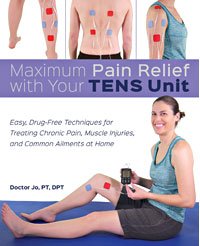The Epley Maneuver for Vertigo can be very effective at relieving vertigo symptoms, but it’s a procedure that should be performed by a physical therapist or other health care professional. This video is for demonstration purposes only.
Again, the Epley Maneuver should be performed by a health professional. I do NOT recommend doing it on your own or having someone else who has never performed it before to perform it on you.
With that said, many of you have asked about it, so here is how it is performed. Always explain what you are going to do with the person. This will increase dizziness and it can be scary. It might also, in rare cases, cause someone to get sick, so I recommend having a bucket near by.
On a bed or treatment table, have the person get into a long sit position with their legs out in front of them. Get them close enough to the edge so their head will hang off when you bring them down. Turn their head to the involved side at a 45 degree angle (this is the side they feel dizzy when they turn in that direction). You want them to be completely relaxed, and you are doing all the movements for them. Then with their head turned, very quickly bring them down with their head off the edge in about 20-30 degrees extension. Hold them in this position for 30 seconds to a minute. You are looking for their eyes to be bouncing side to side. This is called a nystagmus. During this time, the person will feel dizzy, and might want to sit up. Try to keep them relaxed and let them know the dizziness should go away soon.
Once the eyes stop moving or slow down, then turn their head to the other side at a 45 degree angle and keep the 20-30 degrees extension. Wait another 30 seconds to a minute and look for the nystagmus. Hopefully it will be less already and they won’t feel as dizzy.
Now, keeping their head at a 45 degree angle, have them turn to their side, the way their head is already pointing. As they do this, slowly start to tuck their chin in. Wait another 30 seconds to a minute, and then slowly help them sit up by bringing their knees up and dropping their legs off the side while pushing up with their hand.
Slowly bring their head back into a neutral position looking straight forward, and hopefully all the spinning and dizziness will be gone. Now you should instruct them to keep that upright position for 48 hours, so they might have to sleep in a recliner or chair. Also, if you have a soft neck collar, that will help them keep their head in a neutral position to allow the crystals to settle back into their normal position.
You may also like













